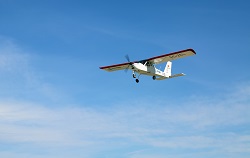Small hybrid-electric aircraft on the horizon
The average light aircraft in use are more than 30 years old. The aviation industry has been slow to electrify aircraft engines despite the technology being readily available on the market. This is because lack of requisite expertise in hybrid technology could increase maintenance costs, environmental contamination and safety risks. Hybrid electric and fully electric vehicles have become more popular over the last few years. Several solutions have been proposed on the market regarding fully electric engines in new aircraft. Instead of catering to only new airplanes, the HYBPRO project proposed retrofitting existing planes with hybrid propulsion engines as a full service to the owner. Business model revved up Researchers drafted a business model around the AXTER AEROSPACE SL’s prototype AX-50 (based on the current commercial AX-40S) that hybridises the airplane engine, adapting the current piston engine of an airplane. The business model includes a full installation service, providing services based on the customers’ needs, as opposed to a product-driven approach. The proposed hybrid engine utilises the electric engine during the majority of the flight, reducing fuel consumption as well as maintenance cost of the engine. “The AX-50 prototype is an affordable and adaptable hybrid propulsion system for retrofitting existing fleet and fitting on new aircraft that provides safer, less polluting and cheaper flying,” says Miguel Suarez, co-founder of company AXTER AEROSPACE SL. The prototype is composed of electric motor controllers, lithium batteries, intelligent charging control systems and battery management, and battery chargers. Bon voyage Engine failure accounts for a significant amount of crashing events and casualties in Europe. “Hybrid motors offer greater in-flight security by offering backup propulsion in case of single engine failure, saving lives and physical damage to aircraft,” says Mr Suarez. Hybrid propulsion systems can reduce engine wear and tear, offering a way to keep older aircraft in circulation while meeting regulatory obligations. Further, hybrid-to-electric planes can serve as bridges to aircraft that will be solely battery powered in the future. Towards eco-friendly flights HYBPRO is committed to meeting the EU technical environmental goals of the European Commission’s Flightpath 2050 Vision for Aviation, which target reductions of about 75 % in CO2 emissions, 90 % in NOx emissions and 65 % in noise. These ambitious goals cannot be achieved with existing technologies. For the time being, hybrid-electric propulsion is seen as the most promising technology for addressing these challenges. Hybrid aircraft rely on an electric motor and use the gasoline engine only as backup. Compared to the performance of other small private airplanes already on the market, they are remarkably quiet and use a significantly lower amount of fuel. Short-haul flights are said to produce over 40 % of aviation emissions. “Hybrid-to-electric aircraft are definitely eco-friendlier, and with battery upgrades, fuel utilisation will decrease even further over time,” concludes Mr Suarez. Several airlines envision a future where aircraft will be relying at least in part on electric propulsion, and HYBPRO indicates this very likely shift toward hybrid propulsion. Although the technology will be applied to small aircraft at first, it could eventually help address the environmental concerns of aviation.
Keywords
HYBPRO, light aircraft, hybrid-electric prpulsion, AXTER AEROSPACE SL, Flightpath 2050 Vision



